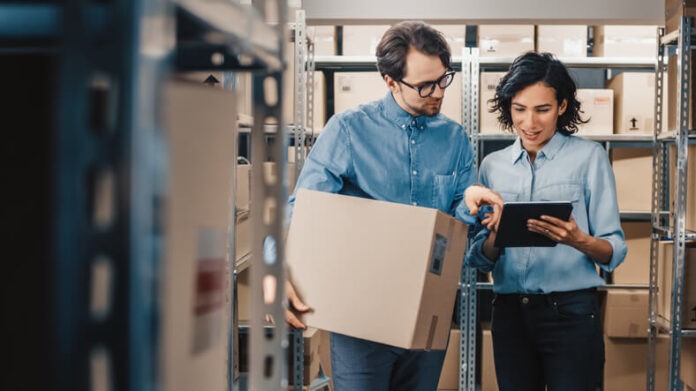Maintaining effective logistics is one of the most important aspects of running a profitable retail business. In fact, it can make or break your success in the highly competitive retail industry.
The global logistics market is expected to reach USD 570.9 billion by 2030, but companies must invest in technology and innovation to stay competitive and reduce inefficient logistics. Optimizing your logistics operations is not only beneficial but also essential for your bottom line.
From inventory management to order fulfillment and delivery, you can significantly save costs, improve customer satisfaction, and ultimately increase profitability if you can more attention to streamlining your logistics.
So, in this post, we will be showing you some essential tips you can use as a retail business owner to help you enhance your retail business logistics and stay ahead in a highly competitive market.
7 Tips to Help Improve Your Retail Business Logistics
#1: Enhance supply chain management
Effective supply chain management is vital for improving retail business logistics. By enhancing supply chain management, you can create a more efficient and reliable logistics system, leading to smoother operations, improved inventory management, and a better customer experience.
You can negotiate favorable terms and agreements to streamline procurement processes and reduce costs. In addition, you can collaborate with suppliers to optimize order fulfillment, track progress, and ensure timely delivery. Evaluate supplier performance regularly to identify areas for improvement.
#2: Streamline inventory management
This is another important aspect you don’t want to handle with levity. Implementing an inventory tracking system allows you to have real-time visibility into your stock levels. It also enables you to make informed decisions regarding procurement and fulfillment.
By leveraging various data analysis techniques, such as demand forecasting, you can anticipate customer needs and plan your inventory levels accordingly. This helps to prevent stockouts and reduce excess inventory, which all come together to help you save costs.
#3: Optimize order fulfillment
Implementing an efficient order processing system can help streamline the entire fulfillment process, from receiving orders to dispatching them for delivery. This includes automating order entry, ensuring accurate picking and packing, and maintaining clear communication channels with your customers.
In addition, utilize technology such as order tracking systems to provide real-time updates to your customers, allowing them to track their shipments and anticipate delivery. Automated systems can also help reduce errors and improve order accuracy, resulting in fewer returns and exchanges.
#4: Improve warehouse operations
A well-organized and optimized warehouse is essential for smooth logistics operations. So, take the time to analyze your warehouse layout and organization to maximize space utilization and minimize travel time for your staff.
Utilize technology, such as barcode scanning or RFID systems, to streamline inventory management and picking processes. You should also consider equipping your warehouse staff with the right tools and training as well. This will go a long way in helping to enhance their efficiency and accuracy in handling inventory.
Implementing quality control measures is another crucial aspect of improving warehouse operations. Conduct regular inspections to identify and address any issues, such as damaged or expired products. This will help ensure that only the best products are reaching your customers, hence significantly cutting down the rate of returns and improving customer satisfaction.
#5: Enhance transportation and delivery
Efficient transportation and delivery play a significant role in meeting customer expectations. If you must position your retail business at the top of the competition, you will need to put in extra effort in this area of your business.
So, evaluate your transportation options to find the most cost-effective and efficient solutions. Collaborate with logistics service providers to help you optimize delivery routes, minimizing transit times and costs. You can as well consider implementing tracking systems that will allow you to monitor shipments in real-time, so you can provide accurate updates to your customers at all times.
Offering flexible delivery options is also crucial in today’s competitive retail landscape. Consider providing expedited shipping, same-day delivery, or click-and-collect options to cater to different customer preferences.
#6: Utilize data and analytics
Data and analytics are powerful tools that can help you optimize your retail business logistics. Gather and analyze data on various aspects of your logistics operations. This could include areas like order fulfillment times, inventory turnover, and delivery performance. Identify areas for improvement and make data-driven decisions to enhance your processes.
#7: Continuous improvement and adaptability
Improving your retail business logistics is not a one-time thing. Instead, it is going to be an ongoing process. So, regularly assess and review your logistics processes to identify opportunities for further optimization. Seek feedback from your customers, suppliers, and employees so you can gain insights into areas that require improvement.
Embrace technology advancements and automation opportunities in the logistics industry. Plus, stay updated with the latest trends and innovative solutions that can help streamline your operations.
Final Thoughts
Optimizing your retail business logistics is essential for achieving operational efficiency and satisfying customer expectations. By streamlining the aforementioned processes, you can take significant strides toward improving your logistics processes.
Implement these tips, adapt them to your specific business needs, and witness the positive impact on your retail business.
















